Current Events: Difference between revisions
Pat kennedy (talk | contribs) (Added item on single frequency (X only) feed horn.) |
Pat kennedy (talk | contribs) (Added May and August 2013 items) |
||
| Line 2: | Line 2: | ||
<!-- Note to editors: articles should be in reverse chronological order. --> | <!-- Note to editors: articles should be in reverse chronological order. --> | ||
===Raytheon ASR11 transmitter tested in split output configuration (5 August 2013)=== | |||
[[Image:5aug2013 ASR11 split pwr test.JPG|center|thumb|300px|ASR11 temporary test configuration]] | |||
Modifications to the ASR11 transmitter were made to allow the RF output power to be delivered in two separate waveguides to supply the H and V polarization antenna ports. Temporary shelving suspended from the ceiling of the CSU-CHILL shop was used to support the dummy loads, etc. that were used during the initial split output configuration tests. | |||
===Dual frequency feed horn re-installed (28 May 2013)=== | |||
[[Image:28may2013 dual horn lift.JPG|center|thumb|300px|Hoisting the dual frequency feed]] | |||
In preparation for thunderstorm season operations, the CSU-CHILL radar was returned to dual frequency (S and X-Bands) on 28 May 2013. | |||
===X-Band only operations begin for the FROST 20hr project: 19 December 2012=== | ===X-Band only operations begin for the FROST 20hr project: 19 December 2012=== | ||
Revision as of 14:01, 30 August 2013
Current Events
Raytheon ASR11 transmitter tested in split output configuration (5 August 2013)
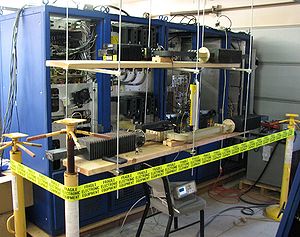
Modifications to the ASR11 transmitter were made to allow the RF output power to be delivered in two separate waveguides to supply the H and V polarization antenna ports. Temporary shelving suspended from the ceiling of the CSU-CHILL shop was used to support the dummy loads, etc. that were used during the initial split output configuration tests.
Dual frequency feed horn re-installed (28 May 2013)
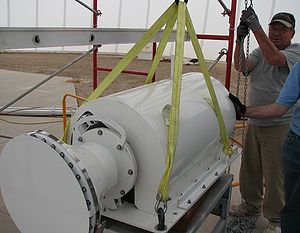
In preparation for thunderstorm season operations, the CSU-CHILL radar was returned to dual frequency (S and X-Bands) on 28 May 2013.
X-Band only operations begin for the FROST 20hr project: 19 December 2012
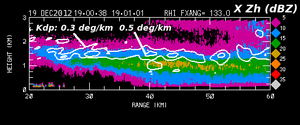
The initial installation of the X-band only feed horn took place on 17 December 2012 following the removal of the dual-wavelength feed. Test data was collected during a widespread snow event on 18 - 19 December.
Dual wavelength operations resume (July 5, 2012)
Dual wavelength (S- and X-band) operations have resumed after the completion of the DC3 project.
Deep Convective Clouds and Chemistry (DC3) Field Campaign (May 1 - June 30, 2012)

CSU-CHILL will be taking part in the Deep Convective Clouds and Chemistry (DC3) Field Campaign from May 1 to June 30. The events calendar will be updated to indicate specific data collection days.
Dual frequency Operations: January 2012
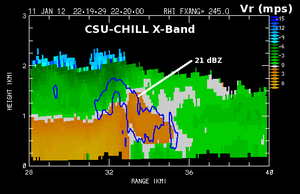
The Dual-frequency feed horn was installed on the CSU-CHILL antenna, and initial data collections were conducted to test the installation. Data from the X-band system is compared against the S-band system here.
Dual frequency feed horn arrives at CHILL: October 5, 2011
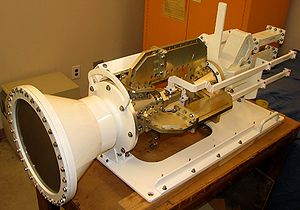
The new feed horn capable of simultaneous polarimetric operations at S and X-bands was delivered in early October. Test operations with this horn should begin in December, 2011.
DOW radar data evaluations: August 26, 2011
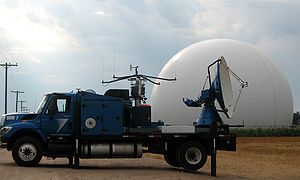
Coordinated dual-polarization data collection was done by the DOW 7 and CSU-CHILL radars during the conduct of a 20hr project.
Recent Changes
An automatically generated list of recent changes to the CSU-CHILL website is available here